During my four-plus years as Executive Director of Construction Career Collaborative (C3), I have been surprised by the many myths and misconceptions that I have encountered. Given that C3’s mission benefits all the parties that comprise the commercial construction industry, building owners, construction companies and the craft workforce, in addition to the ultimate users of the buildings, I would assert that C3 is a win-win-win for everyone.
More on that later, but first let me address some of the myths and misconceptions often attributed to C3.
Myth #1. “The purpose of C3 is to unionize merit shop construction companies.” A quick survey of the make up of the board of directors of C3 shows that this statement is false. The C3 board is comprised of eight general contractors (one union and seven merit shop), five specialty contractors (one union and four merit shop), three industry association executives (one union, one merit shop and one agnostic), four owners’ representatives and principals from two architectural firms. C3 is what its name describes, a collaborative organization working to solve the industry’s craft workforce challenge.
Myth #2. “C3 is a money grab.” C3 is a 501(c)(3) not-for-profit organization with four employees. It has no shareholders and does not have any profits to distribute. The only source of revenue allowing the organization to cover salaries and benefits comes from fundraisers, accreditation fees and donations. C3’s four employees have the responsibility of attracting owners, GCs, specialty contractors and other industry-affiliated organizations to C3 and our mission. We also insure compliance with C3 principles, administer C3’s training database, safety program and enrollment processes. Importantly, in a time of craft worker shortages, we mentor construction companies as they develop and implement craft training programs linked to a career path while earning C3’s craft training endorsement.
Myth #3. “C3 requires a minimum wage.” C3 does not require a minimum wage other than what is prescribed by federal law. C3 does mandate that workers be employees and not independent subcontractors. In fact, C3 believes that the free market should determine the pay of craft workers. C3 believes that a trained, skilled craft worker does high quality work, and more of it, in less time with less rework, which creates demand for that craft worker’s services and results in a growth in their wages naturally through the economic law of supply and demand.
Myth #4. “C3 will audit my company’s payroll records.” C3 compliance checks consist of limited job-site interviews of craft workers to make certain that they are being paid as hourly employees and not as independent subcontractors, and that each worker has their OSHA 10 or 30 safety credential. In addition, C3 verifies that each C3 accredited company carries worker’s compensation insurance. If C3 identifies an issue during its compliance checks, we will ask the company in question to provide documentation that verifies conformance with C3 policies. C3 does not perform financial audits.
Myth #5. “C3 adds cost to a construction project.” C3 accreditation fees are nominal. A “Project Participant” pays one half of one percent of the cost of its contract with a minimum fee of $100 and a maximum fee of $2,000. “Accredited Employers” pay an annual fee of $1,500, which entitles each company to work on as many C3 projects as it wins in that 12-month time period. Craft workers on C3 projects are required to have an OSHA 10 safety credential, and field supervisors must have an OSHA 30 safety credential. C3 Accredited Employers receive consulting advice and access to craft training templates and tools free of charge as a benefit of their accreditation. To date, one project has been bid both with C3 requirements and without them. On that project, the bid differential was four one hundredths of one percent.
Myth #6. “Owners pay a fee to C3.” Owners pay no fees to C3.
Myth #7. “If I train my employees, my competitors will steal them for $.25 per hour more in pay.” Historical training data states that when a company invests in training for its workforce, its employee retention and morale increase. However, the opposite is also true. Employee turnover is higher when a company does not train. And further, the only thing worse than training employees and having them leave is not training them and having them stay!
Myth #8. “C3 is all about immigration.” As a 501(c)(3) organization, C3 cannot and will not take a political stand on any issue. That being said, C3 believes that the commercial construction industry should provide training for all of its craft workers no matter their origin.
As I mentioned in the beginning, the C3 formula benefits all parties. The craft worker receives training to work safely, skillfully and autonomously. This enables them to create demand for their services because they are more productive and require less supervision, which grows their wages. C3 Accredited Employers receive high-quality work, and more of it, with less rework, which translates to greater productivity and higher profitability. Owners receive top-notch buildings with longer building lifecycles and lower maintenance costs. This formula is why 10 of Houston’s highest profile owners and more than 350 construction companies subscribe to the C3 formula today. How about you? C3.is.how.
Chuck Gremillion
Executive Director

